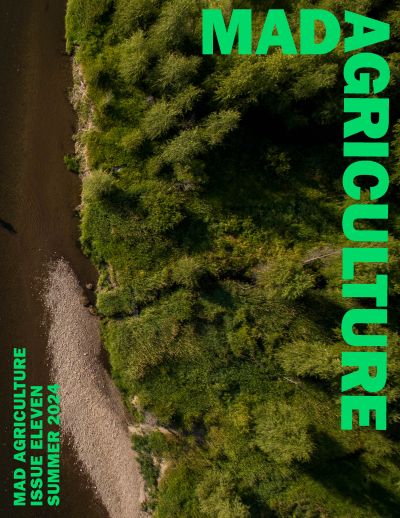
The Mad Agriculture Journal
Grazing in an Art Form
Published on
September 27, 2024
Interview and Photos
Jonnah Perkins
Andy Breiter, owner and founder of Grama Grass and Livestock, is taking a novel approach to bringing grass-fed beef to the Front Range. Scrubbed clean of the romanticized trappings of the ranching lifestyle, Andy and his team access grazing pastures through a combination of public and private land leases in his business model that is ecologically regenerative while also bringing high quality beef to his CSA, farmers market, and restaurant partners. Mad Ag Director of Media, Jonnah Perkins, caught up with Andy while he did chores on two different grazing sites.
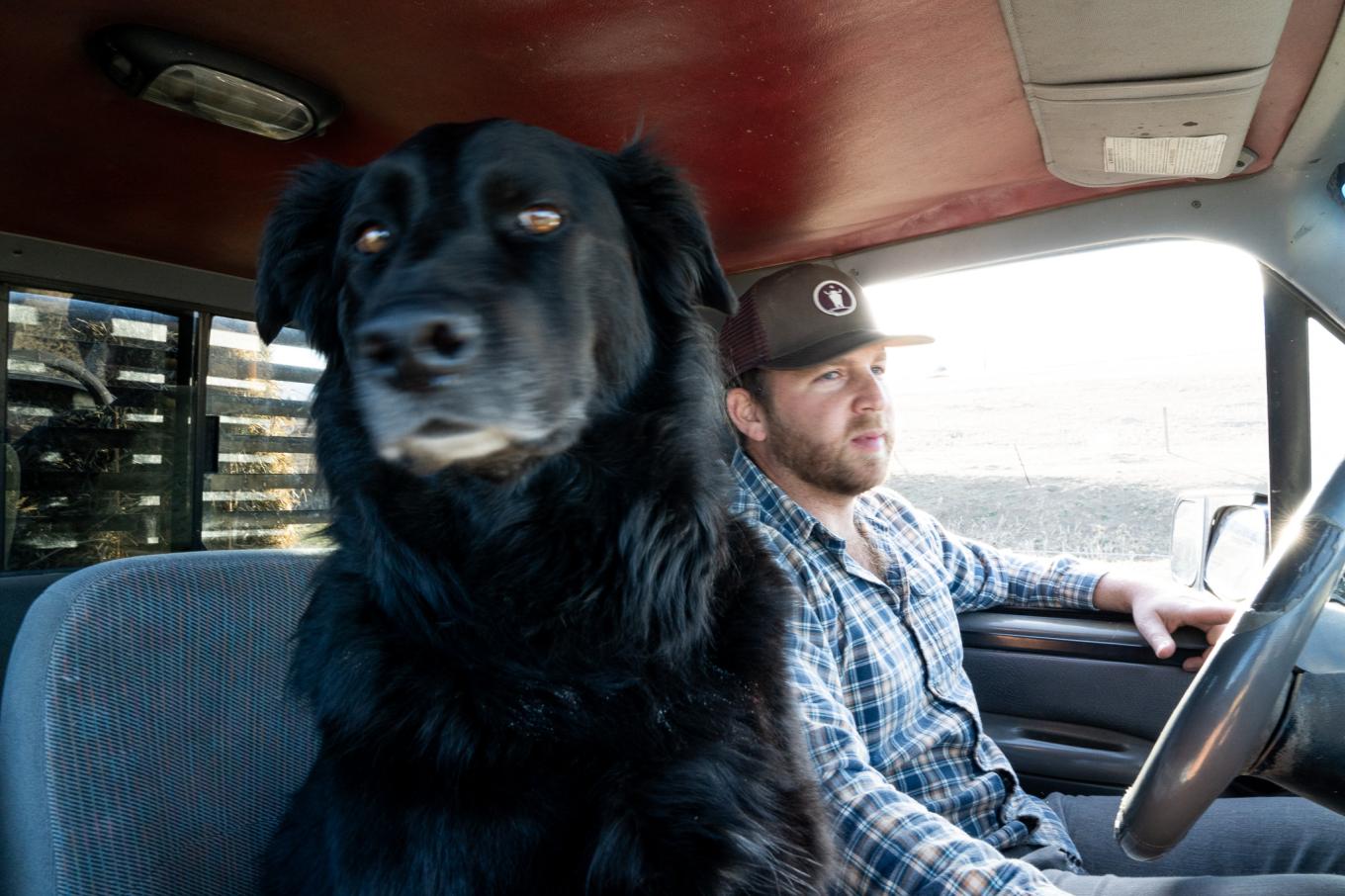
Jonnah:
When you described where we were going to be meeting, you said it was a degraded agricultural parcel on the outskirts of a subdivision area. I’m also seeing industrial park style buildings. What was this before you were on this lease?
Andy:
We are on a City of Boulder, OSMP Field (Open Space and Mountain Parks) that is part of a Shared Learning Collaborative in which we are trying to find the radical center between one side being super pro wildlife and the other side being very pro agricultural production. We are trying to figure out the happy middle ground.
Being on a City of Boulder property, who owns over 15,000 acres of agricultural land here in Boulder County, is a really unique thing because there are so many stakeholders involved. All the citizens who live in the city own this, so they have a right to be a part of the decision making process. So finding that middle ground is super important. That’s the context for this site, because it is a little overrun by prairie dogs right now, and we’re working to rehabilitate it.
Jonnah:
When you are looking at a map and then come for site visits, what features and infrastructure do you need? What are your requirements for being able to run your project on different sites?
Andy:
Nothing. Well, we need grass and ruminant animals as a part of that grassland ecosystem. So grass is our only requirement. We bring fencing materials, we truck and trailer the cattle and a portable corral panel and squeeze chute. You can see baled grass that’s put up on a different field that’s bundled in twine as hay that we can bring to a site because it’s what’s needed to provide organic material. This is all part of this grassland ecosystem.
This was a prairie here, and there is no reverting back to that perfect prairie picture we have in our mind because this tech center behind us is going to stay there. But this land can and does produce food and sequesters carbon if we care for the ecology.
There are bald eagles that fly by, red-tailed hawks, there are the prairie dogs, there are coyotes, all those things, not even counting the biology in the soil. So I think that’s really a big aspect of it while also producing food. We can’t just create a romantic homestead that’s good for this small community. Just an hour and a half away, there’s a feedlot that kills 350 head of cows an hour.

Jonnah:
That’s such a powerful image to consider our proximity to industrialized beef production. Can you describe your customer base? How far does your beef go?
Andy:
We are still working on the correct channel makeup for our customer base. We sell through the Boulder County Farmers Market in downtown Boulder, and we sell that for a very expensive price. We pair that with a partnership with Metro Caring, a food pantry in Denver.
We sell cuts that aren’t super high-end (like no rib-eyes or tenderloins) to Metro Caring. We give them a great price that works well for us and for them. We also have a lot of people who buy through our website. We’ve decided to push more and more into the restaurant world and some wholesale customers and we see a lot of opportunity in working with various different restaurants.
Jonnah:
What do you feel is the benefit of having your beef in a high-end establishment like Corrida?
Andy:
I think it can start to pay for the true cost of production. The cattle market has been a very interesting place over the past four years – really since I’ve started the business. When I was first looking at buying cows, I was seeing prices around 62 cents a pound for a live animal. And right now they’re selling for $1.25 a pound, and it’s still going up.
The cost of production is still increasing and you see the big packers – the Tysons, the JBSs – not necessarily moving their prices because they don’t have high slaughter costs, and they might be bringing in meat from other countries where there’s a different live cattle market.
Then you start to get into country of origin labeling and some other things related to regulations to show this is a US product. But going to a high-end restaurant allows you to get the full cost either way and it also allows us to create great partnerships with a food pantry like Metro Caring. We can get both sides of the coin.
Jonnah:
I know that processing is a challenge for small to mid sized ranchers operating outside of commodity beef. Where do you process?
Andy:
Primarily in Fort Collins and Wiggins, Colorado — two small USDA facilities. The Wiggins location is called Stagecoach Meat Company. They received a grant from the USDA recently to become a USDA facility. This has actually alleviated some of the bottleneck around processing in the Front Range area.
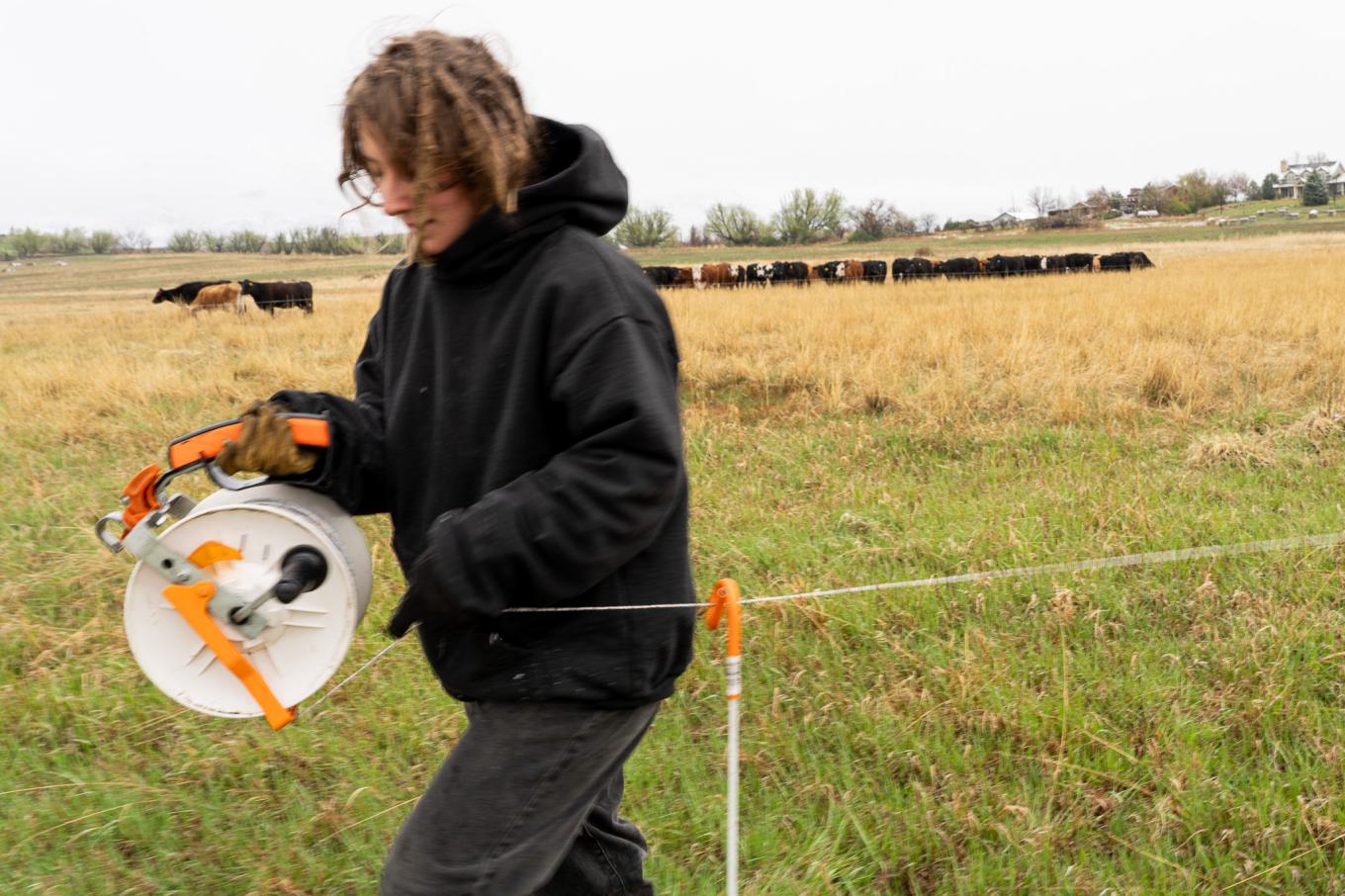
Jonnah:
With your unique approach to mobile grazing that also produces food to serve the immediate community, how does this fit in with other agricultural systems in the area?
Andy:
Once the ball got rolling with our access to land, our approach has turned into a solution for everyone involved, especially given the ecosystem that we live in. The patchwork of land that exists throughout the West is usually a mix of Bureau of Land Management, US Forest Service, and state land. In Boulder County, instead of federal or state land, it is the county and the cities taking the lead. The county and city are really wanting to see practices like rotational grazing happen on their properties. These public lands offices want to make sure that their properties are taken care of. That has allowed our business to grow much faster than we originally expected.
Jonnah:
Something that Bryan Dayton of Corrida has talked about is defining beef culture in a way that truly benefits the ranchers and rewards them as land stewards. Can you talk about what beef culture means for you as a rancher in Boulder County.
Andy:
What Bryan is doing is amazing and so unique by starting to vertically integrate all his restaurants so he has his own beef label. There’s an aspect to the environment that we live in, specifically here in Boulder County, and same for anybody whether it’s Louisiana or Chicago or New York, to understand how we actually grow what belongs here.
A huge issue from the industrialization of our food system is the mentality to “Put corn everywhere, put soy everywhere. It doesn’t matter what locally exists there.” So I think beef culture is a great term in many senses because it is an important part of this place. Taking that a step further, how do we really make that regionality idea have a stronger impact?
When we’ve brought people out to the ranch and talked to them about the regenerative practices that we’re doing, that’s what has started to hit home with our customer base more than anything else.
It’s such an important piece that I’ll talk about every single time I have a chance to, because the grasses are what held onto our carbon, and as soon as we plowed those up, that’s when it released.
On the other hand, for me beef culture is a dangerous place. That’s what JBS lives on. That’s what Tyson lives on. You go to the auction in Fort Collins where there’s a huge feedlot an hour east of Fort Morgan, where you can drive 15 minutes at 55 miles per hour until you reach the end. It’s all feedlot.
That is the predominant beef culture here. So there’s that danger of just continuing to promote that practice, which is the opposite of what Corrida is doing.
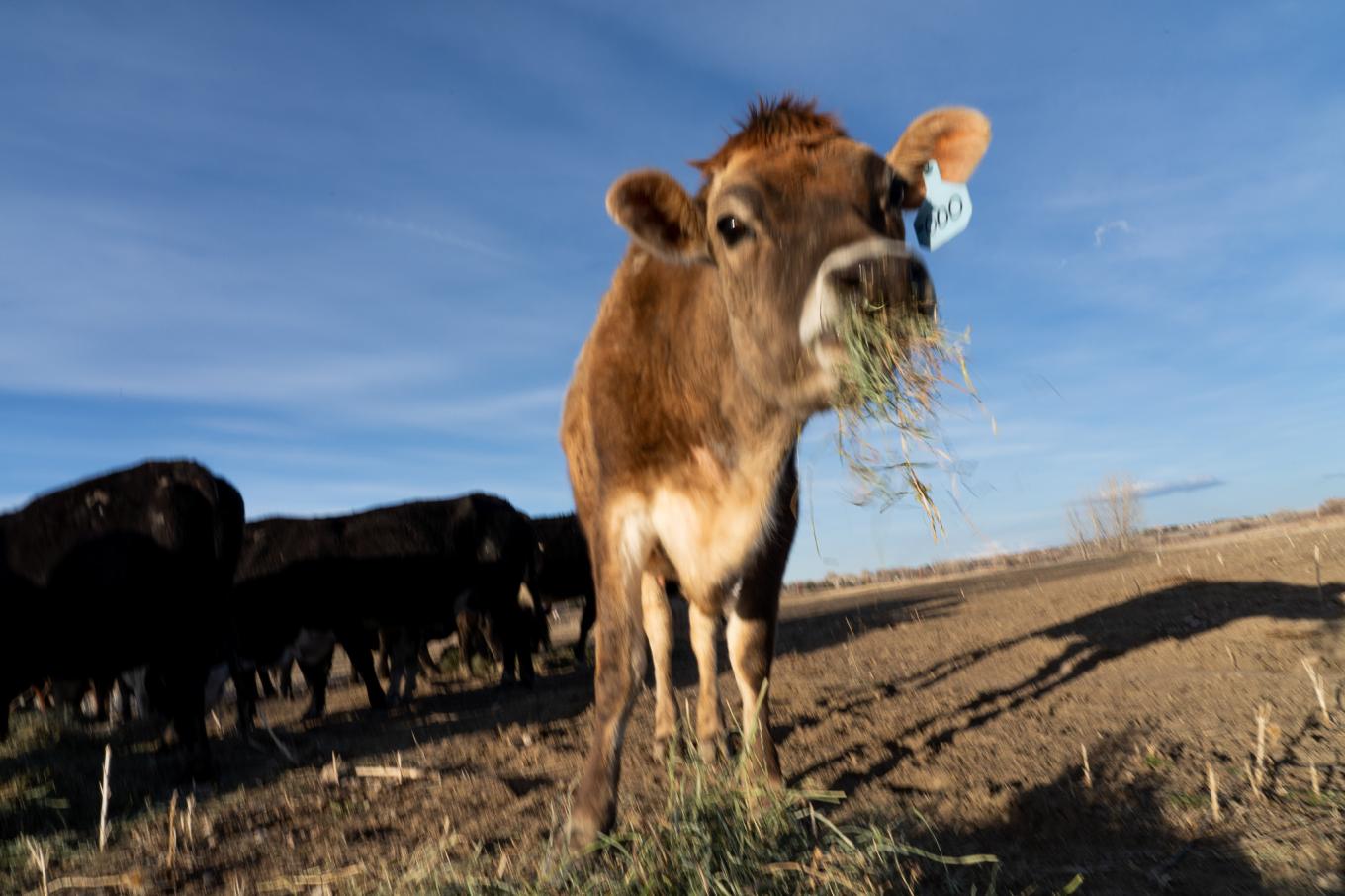
Jonnah:
We’ve been talking about this unique business model that you have designed. I want to go back to the beginning and understand how this concept first came to you?
Andy:
It came to me from beginning to understand Holistic Management principles. I asked myself, how do I accomplish good grazing and Holistic Management goals no matter what a piece of property looks like? Holistic Management was founded by Allan Savory, who works closely with his wife, Jody Butterfield. It’s understanding that we as humans and the ecosystems that we work within are complex systems. Meaning that it’s not just following step one to step two to step three, because it’s hard to determine how step one will affect step 10. The more specific principles to grazing are that rest is a key feature to our grasslands as well as ruminant animals. Working with variables in that complex system and understanding that any ranch is working with humans and really taking care of the humans as complex systems in and of themselves is the general principle as well.
Jonnah:
While I was following you as you were doing your fencing, you were talking to Anna, your employee, and you were calling out some things that you were observing. You were looking at the shape and size of the cow’s stomach. I’m sure you’re looking at grass. What are some things on this rainy, snow morning that are impacting your Holistic decision making process today?
Andy:
We had about a quarter inch of moisture yesterday so I knew that as we came to this paddock, I was curious to see how the cows bedded down and when the ground gets wetter, they have a heavier impact on the ground. I was seeing that in the area that they were given yesterday, especially compared to the day before, they had a heavier impact than one might desire because of the moisture that came. It’s not necessarily a bad thing because rest is the key feature. Knowing that the area is now going to get at a minimum of 180 days rest, if not another full year’s worth of rest, it will have plenty of time to recover and that is part of our goal.
Really the question Anna and I were discussing was, “How do we adjust the paddock for today to account for what we saw yesterday because it’s still moist?” I was talking to Anna about whether we accomplished the impact that we were desiring yesterday, and if so, how do the cows look? Because we are trying to finish cows on grass, we need them to constantly be getting high quality or the best quality forage that’s available to them here. If we had a heavy impact and the cows still looked good, then it checks our two goals. If we had a heavy impact and the cows didn’t look good, then we overdid it.
We are trying to balance those two things because grazing is an art form. It’s understanding the grassland, it’s understanding the cows. There’s no science behind it. I mean there is science behind it, but when you take that science from the land-grant schools and apply it to a complex ecosystem, it’s not a direct application. There’s definitely information there that you can utilize, but there’s also the reality of it. All our cows are different sizes. All of them have different breeds and different needs for that day. Some of them are pregnant right now, some of them are milking, some of them are dairy cows. So it’s trying to take all that information and say, “Okay, what is our decision for today in terms of how much grass we want to give them?”
Jonnah:
How do you manage all of these details? When you wake up in the morning and you’re setting your plan for the day before, what are you looking at?
Andy:
Some of this is leaving it up to the employees and saying, again, it’s an art form. As long as they’re not just spraying black paint all over the artwork and they’re working to create their own art and improving on that, I’m generally okay with setting the context and the goal for the property. More than anything, I’m focusing on setting the overarching big picture of the logistics between what our goal is for successfully grazing this property and making sure that we are heading towards that goal in whatever art form that takes place.
Logistically, I am constantly managing communication and transportation. How do we get them to the next property? What is that next property? How are we communicating with the landowner of that next property about whether or not we will successfully graze that in the timeframe they want? Are we running late? Are we running early? How many cows are going to show up?
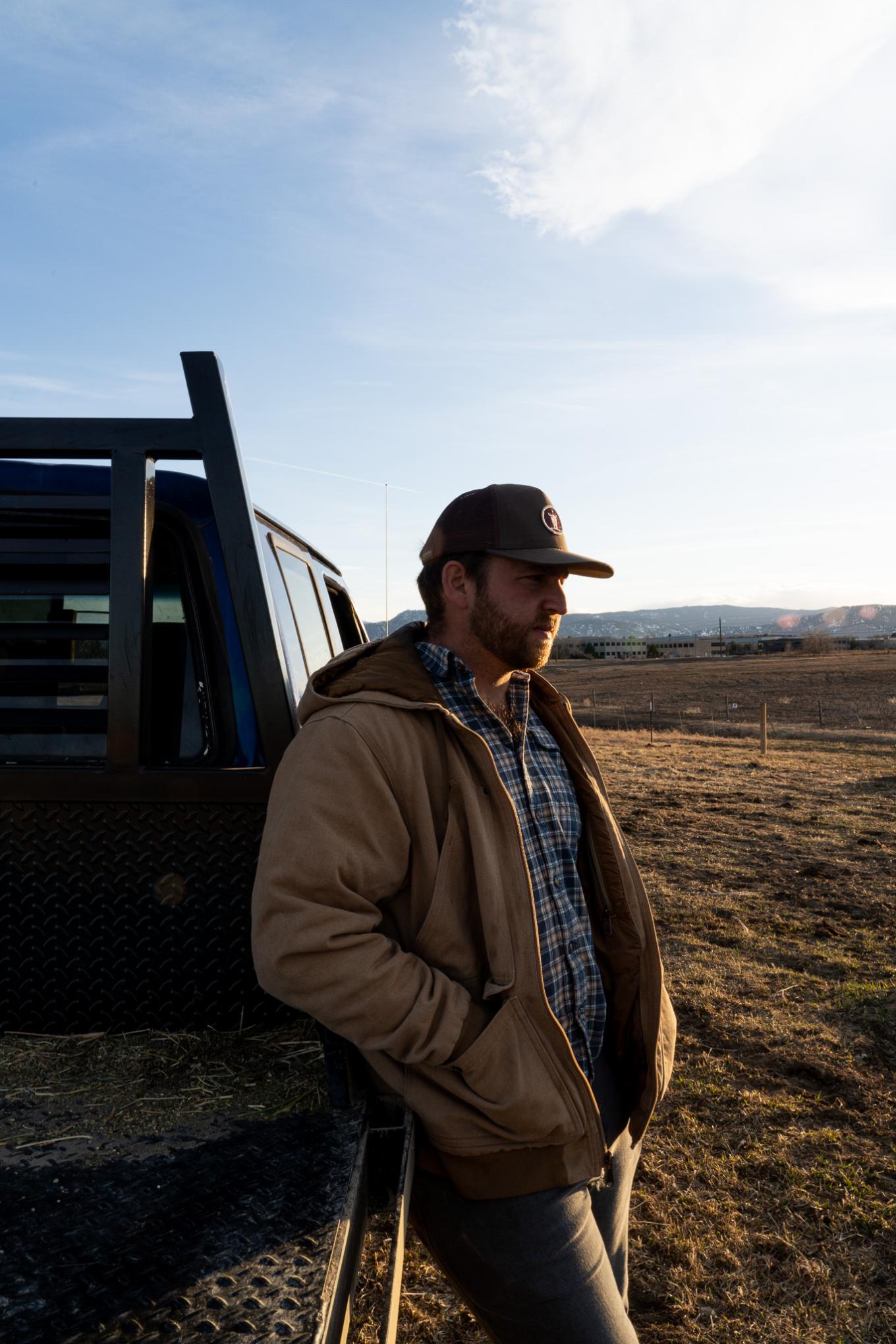
Jonnah:
I’m witnessing and being part of watching you deal with live animals on grass. These are products. So how does the sales and moving inventory balance for you as a business owner? Or is that something that you’ve handed off to someone else?
Andy:
It all starts here on the land. For me, what we’re selling is a product and more specifically, it’s a commodity product. It is literally traded on the commodities market. So this impact on the land that we’re doing is trying to add value to that commodity product from multiple factors of land health and healthy nutrition of the meat itself. Generally, this is something that a lot of people want to see happening. Voting with their dollars by purchasing something that might be a little bit more expensive even though it’s a commodity because of these additional values that are being brought to the table. So it all starts here in the field. From there, I work closely with my employee Julia, who is more of a chef by training. So she’s more comfortable working with the meat product itself. We are still working on defining what the right channel makeup is for moving a whole animal because these are whole animals.
What that takes is having high-end customers, whether at the farmer’s market or high-end restaurants who will buy steaks or other items. It takes moving a lot of product through institutional channels that will take a lot of ground beef because a lot of the animal is ground beef at a much lower price point. Having that mix of channels is what we’re still trying to figure out so we can find the right balancing point.
A huge hole, in my opinion, is the whole direct-to-consumer space. As farmers we’re trying to do more work direct-to-consumer, making that convenient because national distributors are literally delivering something that they’re calling the same thing as our product to people’s doorstep from ordering online. I don’t really love talking in superlatives, but I’m doubtful that we’ll ever be as convenient as that and I don’t think we should be. But that’s what we’re competing with, so we do have to create some logistics around it being convenient for those customers.
Jonnah:
I know that this is a year-round operation and animals don’t take a day off. So you’re in a really dense business. When you step back and you take this longer view, do you have big, lofty, or philosophical sentiments about what you’re doing?
Andy:
The way that makes the most sense in my mind is there is basically an end goal, which is having career options for folks in regenerative agriculture. Long-term career options that pay folks like they would get paid in agribusiness for multinational corporations. And those folks include myself, where I can work through my values of this land health ethic and still have a career that pays for what I want to do in life.
That’s my long-term goal along with creating a blueprint for others to potentially follow. I am being really open with that so it can be this path that others can take. With that goal in mind, where we’re standing right now, there are a lot of shrubs and brush in the way and plenty of different paths to get to that goal. My hope is that we can fully clear that path and not let it just grow in behind us. Because I don’t want other farmers to continue to have to fight through the same hurdles we’re currently fighting.
